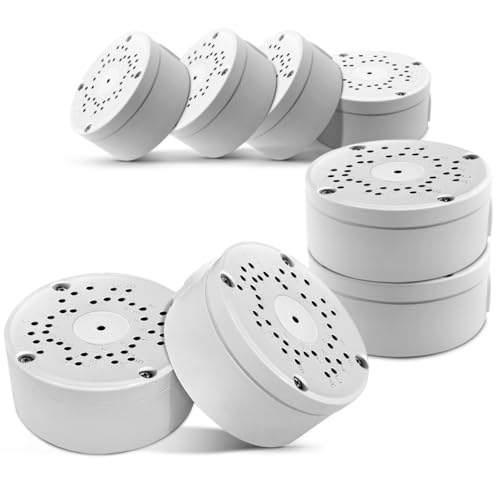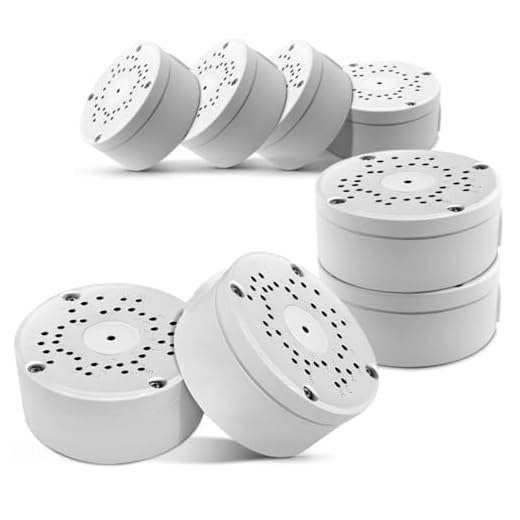


Outdoor security cameras are essential for keeping your home safe and secure. However, the placement of these cameras plays a crucial role in their effectiveness. Knowing how to position your outdoor security camera correctly can make a significant difference in the level of protection it provides.
Choosing the right location: When positioning your outdoor security camera, consider areas that are vulnerable to break-ins or suspicious activity. These could be entry points like doors and windows, or blind spots where intruders could hide. Make sure the camera has a clear view of these areas.
Angle and height: The angle and height at which you install your outdoor security camera are also important factors. Aim for a downward angle to capture faces and activities better. Mount the camera at a height that is out of reach but still provides a wide field of view.
Choosing the Right Location
When positioning your outdoor security camera, it is crucial to choose the right location to ensure optimal coverage and effectiveness. Here are some key factors to consider:
- Visibility: Make sure the camera has a clear line of sight to the area you want to monitor. Avoid obstructions such as trees, bushes, or walls that could block the camera’s view.
- Height: Mount the camera at an appropriate height to capture the desired area without being too high or too low. Aim for a height that is out of reach but still provides a good angle for surveillance.
- Weather protection: Select a location that offers some protection from the elements, such as under an eave or a covered porch. This will help prolong the camera’s lifespan and ensure uninterrupted operation.
- Lighting: Consider the lighting conditions in the area where you plan to install the camera. Choose a spot that provides adequate lighting for clear video footage, whether it’s natural light or additional lighting sources.
Understanding the Field of View
When positioning your outdoor security camera, it is crucial to understand the field of view that the camera offers. The field of view refers to the area that the camera can capture and monitor. It is important to consider the camera’s field of view when determining the best placement for maximum coverage.
Factors affecting the field of view:
- The focal length of the camera lens
- The angle of view provided by the camera
- The resolution of the camera
By understanding the field of view of your outdoor security camera, you can ensure that you position it in a way that maximizes its surveillance capabilities and covers the areas you want to monitor effectively.
Avoiding Obstructions and Glare
When positioning your outdoor security camera, it is important to avoid any obstructions that could block its view or cause glare. Here are some tips to help you avoid these common issues:
1. Clear Line of Sight
Make sure there are no trees, bushes, or other objects in the camera’s line of sight that could obstruct the view or provide cover for intruders. Trim back any foliage that may block the camera’s view.
2. Avoid Direct Sunlight
Avoid positioning the camera in direct sunlight as this can cause glare and affect the quality of the footage. Look for a shady spot or use a sunshade to protect the camera from the sun’s rays.
Ensuring Proper Installation Height
When positioning your outdoor security camera, it is crucial to consider the installation height. Here are some key points to keep in mind:
- Mount the camera at a height of 8-10 feet for optimal coverage and visibility.
- Avoid installing the camera too high, as it may affect the quality of the footage and make it difficult to identify faces or objects.
- Ensure that the camera is out of reach to prevent tampering or vandalism.
By following these guidelines, you can ensure that your outdoor security camera is positioned at the proper height for maximum effectiveness.
Considering Lighting Conditions
When positioning your outdoor security camera, it is crucial to consider the lighting conditions in the area. Bright sunlight or harsh glare can cause issues with image quality and visibility. Make sure to avoid pointing the camera directly at the sun to prevent overexposure and washed-out footage.
Additionally, consider installing outdoor security cameras in well-lit areas to ensure clear footage at night. Motion-activated lights or infrared features can also help improve visibility in low-light conditions. Test different angles and positions to find the optimal placement for your camera based on the lighting conditions in your outdoor space.
Testing the Camera’s Angle and Functionality
After positioning your outdoor security camera, it is important to test its angle and functionality to ensure optimal performance. Here are a few steps you can take to test your camera:
1. Check the camera’s field of view: Walk around the perimeter of your property to see if there are any blind spots or areas that are not covered by the camera. Adjust the camera’s angle if necessary to ensure full coverage.
2. Test the camera’s night vision: Wait until after dark and review the camera’s footage to see how well it captures images in low light conditions. Make sure the night vision feature is working properly.
3. Monitor the camera’s motion detection: Trigger the camera’s motion detection feature by walking in front of it or simulating movement in the camera’s field of view. Check if the camera alerts you when motion is detected.
4. Review the camera’s recording quality: Playback the recorded footage to assess the clarity and quality of the video. Make sure the camera captures clear images and videos for easy identification.
By thoroughly testing your outdoor security camera’s angle and functionality, you can ensure that your home is well-protected and secure.






